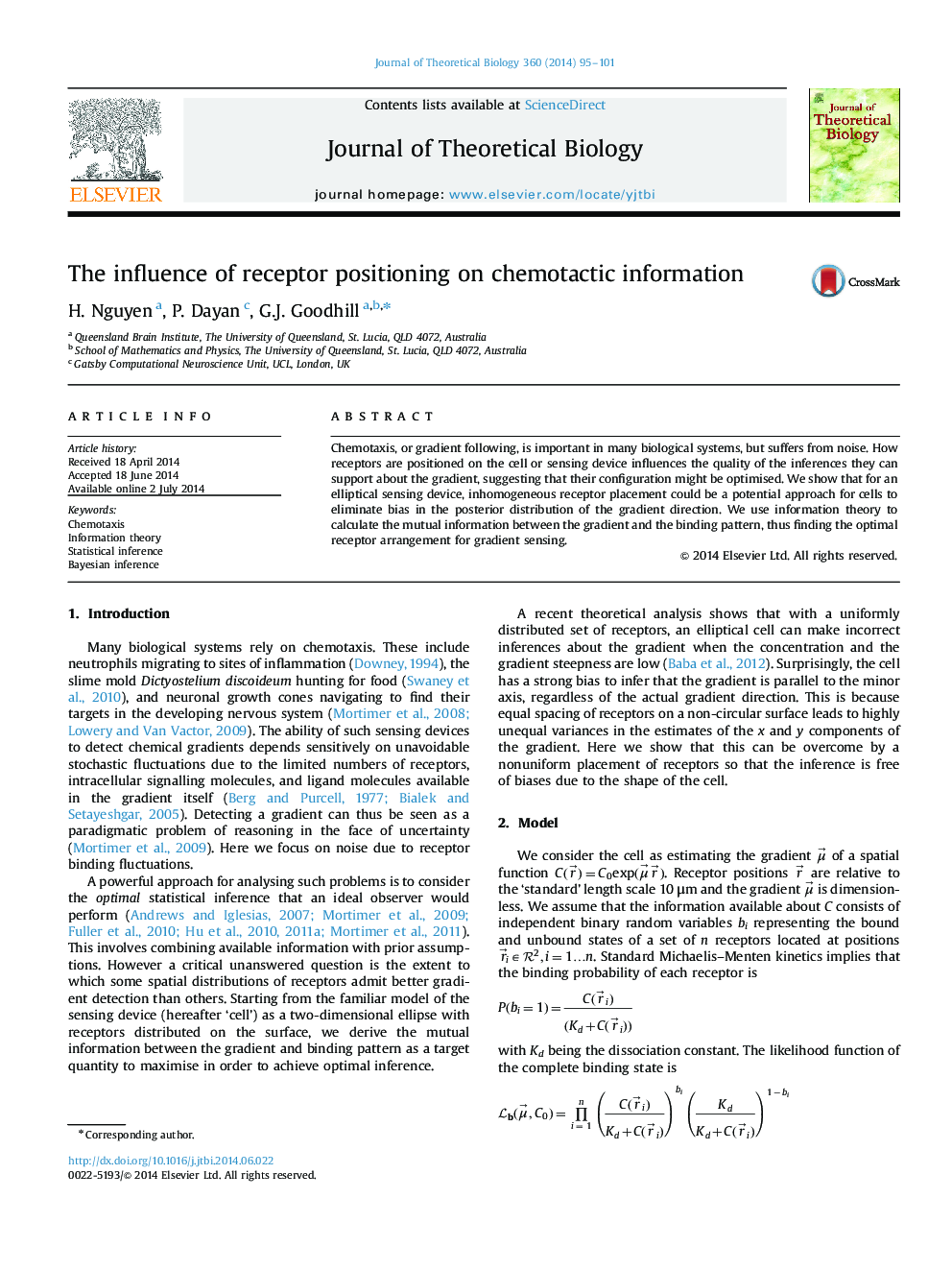| Article ID | Journal | Published Year | Pages | File Type |
|---|---|---|---|---|
| 4496105 | Journal of Theoretical Biology | 2014 | 7 Pages |
Abstract
Chemotaxis, or gradient following, is important in many biological systems, but suffers from noise. How receptors are positioned on the cell or sensing device influences the quality of the inferences they can support about the gradient, suggesting that their configuration might be optimised. We show that for an elliptical sensing device, inhomogeneous receptor placement could be a potential approach for cells to eliminate bias in the posterior distribution of the gradient direction. We use information theory to calculate the mutual information between the gradient and the binding pattern, thus finding the optimal receptor arrangement for gradient sensing.
Related Topics
Life Sciences
Agricultural and Biological Sciences
Agricultural and Biological Sciences (General)
Authors
H. Nguyen, P. Dayan, G.J. Goodhill,
